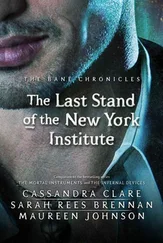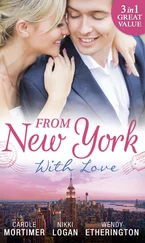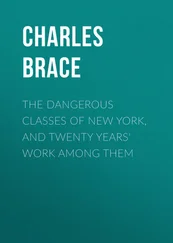Pee-Wee had spent the summer after high school trying to get his friends who were addicted to go to Riverside Hospital, on North Brother Island in the East River, the only facility for treating addicts under the age of twenty-one. Anyone below that age could be sent there by voluntarily petitioning a magistrate—or be assigned for treatment as part or all of a criminal sentence. An addict over twenty-one had nowhere to go for medical treatment unless he went to Lexington. The alternative was jail: an addict could apply to the Department of Correction to be sent to the prison on Rikers Island or to the Women’s House of Detention in order to be locked up so he or she couldn’t get drugs; this meant going cold turkey, a torturous process. Pee-Wee Leon didn’t have much luck persuading his friends to voluntarily commit themselves to this agony, nor did he know of any alternative. In desperation, he went to his minister.
Sitting in the tiny backyard garden of the house where he lives now, on 105th Street in East Harlem, five blocks from where he lived when I met him more than thirty years ago, Norm recalls that time when the young man from his church asked for help. “Pee-Wee was one of our church’s youth group who I knew very well. He loved people, and he saw his friends throwing away their lives on heroin. He came to me totally discouraged and said, ‘What are we going to do?’” Norm pauses a moment, then laughs. “Like all good Americans, we formed a committee.”
Norm and Pee-Wee asked two women from the neighborhood to join them, one whose daughter was addicted and one who worked as a secretary for the parish, whom I called in my book Maria Flores. Maria was simply concerned with the spread of drugs among people she knew.
“We decided we’d educate ourselves and others,” Norm recalls, “and we sent the word out. We got seventy-five to a hundred people coming to meetings just to hear about different aspects of the problem. Heroin had been a very hush-hush subject, something people didn’t discuss, so there were a lot of myths about it, and people hid their fears and problems, not wanting others to think they were addicted or had an addict in their family. Bringing it out in the open gave people a chance to learn and ask questions and share their concerns. We got people from the police department to come, and doctors and psychologists. We got Bill Dufty, who had just collaborated with Billie Holiday in writing her autobiography, Lady Sings the Blues .”
I remember meeting Dufty at the New York Post , where he worked as a reporter, and Murray Kempton introduced me to him as the most intelligent man he knew. I sometimes sat in Murray’s office while he and Dufty, who I thought looked like the youthful, journalistic Orson Welles of Citizen Kane , held elliptical conversations about New York politics interspersed with references to history and literature, rendered in hip talk so obscure I could barely follow it. But I found it immensely enjoyable, rather like a verbal Charlie Mingus concert. I got to know Dufty’s flamboyant wife, Maely, at meetings and fund-raising events of the narcotics committee.
The first hour of the committee meetings, when addicts and families could talk and get information in what now might be called a support group, began with the serenity prayer used by Alcoholics Anonymous. The group was led by Ramon Muñoz. Ramon had been through the treatment program at Lexington and was one of the few who had managed to stay off drugs after coming back to the old neighborhood. I got permission to sit in on these sessions myself, where I played the journalistic role of fly on the wall, just listening and taking notes. I knew that strangers, especially from the press, were usually not allowed into such private sessions, and I felt privileged to be there.
Word spread that addicts who wanted to kick the habit could receive help in getting to Lexington. Norm Eddy had the forms to fill out, and sometimes the committee would provide bus fare. The problem was that it took several weeks before an applicant found out he was accepted. During this waiting period, the addict would often start using again and lose the desire to stop.
One night I watched a nervous young man, who tried to cover his broken English by speaking quickly, tell the committee, “I wanna go K.Y.” He explained that he had only a six-month habit now, and he wanted to kick before it got any worse. Ramon recommended he go to Rikers for thirty days and kick his habit while he awaited word from Lexington. A discussion followed, with other addicts also urging the young man to commit himself to Rikers, and from there go straight to Kentucky, so he’d stay clean and out of trouble. By the end of the meeting, the young man had disappeared; he never showed up again.
An official from the prison on Rikers Island came one night to talk to the committee and answer questions, and one of the neighborhood boys who’d been there asked why addicts who went to kick their habit cold turkey were put on hard labor four or five days after they arrived, when they were often still sick from the process of withdrawal. The Rikers official explained that “many of you fellows come back again and again, sometimes two and three times a year. Well, we instituted that hard labor so you wouldn’t get the idea we were running a country club out there.”
Long, hard, bitter laughter burst from the audience.
Another night I heard some people at the committee meeting talk about going to visit one of the teenage boys from East 100th Street who was at Riverside Hospital, and I asked if I could go along. The next day we took a subway to 134th Street, where we boarded a ferry for North Brother Island, a small patch of land about ten minutes away. Standing in the spray of the deck with my new neighbors from East Harlem, it struck me that New York City had a ferry ride for everyone. My literary friends in Greenwich Village took the Staten Island ferry in imitation of Edna St. Vincent Millay, reciting her lines from “Recuerdo”: “We were very tired / We were very merry / We went back and forth / All night on the ferry.” Immigrants from Europe took the ferry from Ellis Island to the streets of New York, and tourists whose ancestors had made that trip in a former generation took a ferry to the Statue of Liberty, reciting in homage the verse of Emma Lazarus: “Give me your tired, your poor / Your huddled masses yearning to breathe free.” On North Brother Island, teenagers were trying to breathe free of the enslavement of heroin.
We visited Julio in the detoxification ward, and he led us out to the solarium to talk. This was his second trip to Riverside: the first was on assignment from a judge, after being arrested for possession of heroin; this time was voluntary, after taking an overdose of some “strong stuff.” He’d been told it was pure heroin but didn’t believe it, and he took too much and OD’d. But now he had already kicked and was eager to get back to the streets. On his first visit here, he had stayed fifty-two days and twice tried to escape, once by swimming (“I was busted in the river”), once when he was just about to dive in. This time they wanted to keep him for a standard program of six months, but he said he didn’t need it, he would never get hooked again. He said if that happened he wouldn’t go back to jail or the hospital, he would just OD: “That’s the only way out for a junkie.” It was part of the lore, based on painful experience in the neighborhood: “Once a junkie, always a junkie.”
On the wall of the bright solarium was scrawled in pencil JUNKIES’ PLACE, and under it was sketched a lopsided cross. Below that, someone had drawn a coat of arms with an addict’s “works” (needle, syringe, and belt) on a field of chipping green plaster. Just beyond, the arc of big windows gave a sweeping, sun-washed view of the New York City skyline. I tried to see it from this vantage, through the eyes of a Puerto Rican kid hooked on heroin rather than from the starry-eyed perception of a young midwesterner out to fulfill his dreams. The soaring buildings seemed then not so inspiring as haughty and teasing, as if to say, “You can see us, but you can’t reach us.” It gave me a chill. I had a sense of the fractured, fragmented views Manhattan represented to its millions, the kind of shifting, kaleidoscopic experience Dos Passos tried to capture in his early novel Manhattan Transfer .
Читать дальше












